
The history of Sri Lanka is unique because its relevance and richness extend beyond the areas of South Asia, Southeast Asia and the Indian Ocean. The early human remains which were found on the island of Sri Lanka date back to about 38,000 years ago.

British Ceylon, officially British Settlements and Territories in the Island of Ceylon with its Dependencies from 1802 to 1833, then the Island of Ceylon and its Territories and Dependencies from 1833 to 1931 and finally the Island of Ceylon and its Dependencies from 1931 to 1948, was the British Crown colony of present-day Sri Lanka between 1796 and 4 February 1948. Initially, the area it covered did not include the Kingdom of Kandy, which was a protectorate, but from 1817 to 1948 the British possessions included the whole island of Ceylon, now the nation of Sri Lanka.

Charles Henry de Soysa Dharmagunawardana Vipula Jayasuriya Karunaratna Disanayaka popularly known as Charles Henry de Soysa, JP was a Ceylonese entrepreneur and philanthropist. He was a pioneering planter, industrialist and was the wealthiest Ceylonese of the 19th century. He was instrumental in the establishment of the first Ceylonese bank, the Moratuwa carpenters guild, the Ceylon Agricultural and National Associations. He is widely regarded as the greatest philanthropist of the island for contributions which includes the De Soysa Maternity Hospital, the Prince and Princess of Wales Colleges, the Model Farm Experimental Station and many other institutions and acts of charity, establishing infant-maternal healthcare and secular education for girls in the country. He would have been the island's first Knight Bachelor, but having died prior, his widow was given the rare honor of the use of the style and dignity of wife of the Knight Bachelor and was known as Catherine, Lady de Soysa.

The Grand Hotel is a four-star boutique hotel in Nuwara Eliya, Sri Lanka, that was built in the style of an Elizabethan-era manor house. The hotel has 154 rooms, including three presidential suites, four junior suites, including a governor's suite that have been maintained to preserve the traditional design. The Grand Hotel has a number of restaurants, bars and a billiards room.

The Queen's Hotel is an 80-room British Colonial style three star hotel, located at central hill capital Kandy in Sri Lanka. Located in the center of the city at end of the main street, this former Governor's residence is one of the oldest hotels in Sri Lanka with a history of over 160 years. It is currently managed by the Ceylon Hotels Corporation PLC.

President's Pavilion is an official residence of the President of Sri Lanka, located in Kandy, Sri Lanka. This was formerly the Governor's Pavilion until 1972 when Sri Lanka became a republic. It is located close to the sacred Temple of the Tooth in the center of the city of Kandy at the head of the Pavilion Street. Although an official residence, it is used rarely for official functions, most notably during the Esala Perahera when at its conclusion the perahera sandeshaya is presented.

The Royal Palace Park, also known as Wales Park, Wace Park or Rajawasala Park, is a small park on top a small hill in the heart of the city of Kandy, that overlooks the Kandy Lake and most of the city. Established by King Sri Vikrama Rajasinha of Sri Lanka it was renamed as Wales Park in honor of the Prince of Wales by the British.

Ceylon University College was a public university college in Ceylon. Established in 1921, it was Ceylon's first attempt at university education. The college didn't award degrees under its own name but prepared students to sit the University of London's external examination. The college was based in Colombo. The college was merged with Ceylon Medical College in 1942 to form the University of Ceylon. The college was also known as University College, Ceylon; University College, Colombo; and Colombo University College. Its buildings and grounds are now occupied by the University of Colombo which is considered its successor.
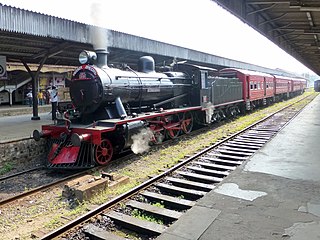
The Viceroy Special is a special passenger train service operated by Lakindu & Thathsara (Ceylon) Ltd. Powered by the sole steam locomotive kept in operation in Sri Lanka, it is operated as a private train on all railway lines in the island. The 75-year-old luxury train has two air-conditioned observation saloons and a restaurant car.
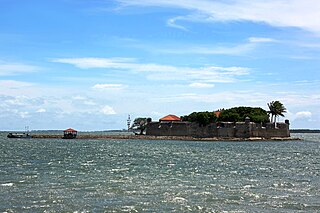
Fort Hammenhiel is a fort built around a small island between the islands of Kayts and Karaitivu of Jaffna Peninsula in Northern Sri Lanka.

St. Paul's Church is an Anglican church in the historical district of Kandy, Sri Lanka on sacred grounds west of the Temple of the Tooth.
The Clifford Cup is the most prestigious club rugby knockout tournament in Sri Lanka, and arguably the oldest rugby tournament in Asia. The Clifford Cup commenced in 1911 and has been played continuously since 1950, having completed 79 seasons. The tournament began as a competition between the mercantile executives in Colombo and planters in the hill country.
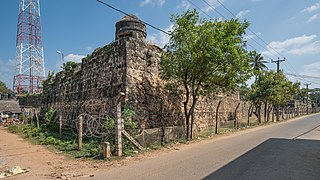
Kalpitiya Fort was built by the Dutch between 1667 and 1676. Kalpitiya was important as it commands the entrance to the adjacent bay, Puttalam Lagoon. The surrounding Puttalam area was one of the major cinnamon cultivation areas in Sri Lanka. The Dutch even constructed a canal from Puttalam via Negombo to Colombo to transport cinnamon from the area.

British Garrison Cemetery is a British cemetery in Kandy, Sri Lanka, for British nationals who died in Ceylon. It was established in 1817 just after British captured the Kandy and closed in 1873 due to a ban on burials within the municipal limits, although special provision was given to allow the burial of relatives of those interred in the cemetery, with last person buried there being Annie Fritz in 1951. The cemetery contains 195 graves of men, women and children. The most common causes of death were tropical diseases such as malaria and cholera.

The Kandy General Post Office is the main post office in Kandy, Sri Lanka.
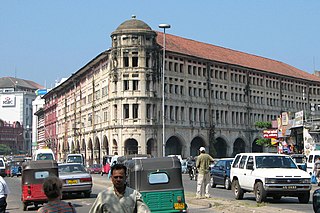
The Gaffoor Building is a prominent four-storey wedge-shaped building located on the corner Sir Baron Jayatilaka Mawatha and Leyden Bastian Street, Colombo Fort.

The Empire Hotel, Kandy or Olde Empire Hotel, is a small two-storey heritage hotel located on Temple Road in the Kandy city centre.
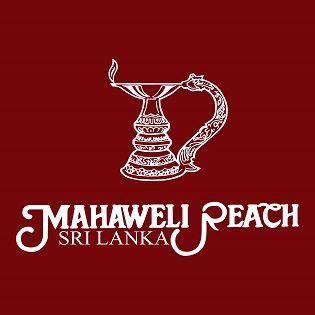
Mahaweli Reach Hotel, traded as Mahaweli Reach Hotels PLC, is a five-star luxury hotel in Kandy, Sri Lanka. The hotel is located on the banks of the Mahaweli River, hence the name. The hotel was founded in 1973 and in 1982, it was listed on the Colombo Stock Exchange. Mahaweli Reach became the first five-star hotel in Kandy in 2000. Universal Enterprises, a Maldivian resort operator has been the controlling shareholder of the hotel since 2002. Mahaweli Reach, a hotel with colonial architecture, was designed by Ashley de Vos.

Ceylon Hotels Corporation PLC, often called Ceylon Hotels, is a hospitality company in Sri Lanka. The company was incorporated through an Act of the Parliament of Ceylon in 1966. The company was listed as a public company in the following year. Ceylon Hotel Holdings, a subsidiary of Galle Face Hotels Group is the holding company of Ceylon Hotels Corporation. Ceylon Hotels' subsidiary, Kandy Hotels Company owns and operates the Queen's Hotel and the Hotel Suisse heritage hotels.



















